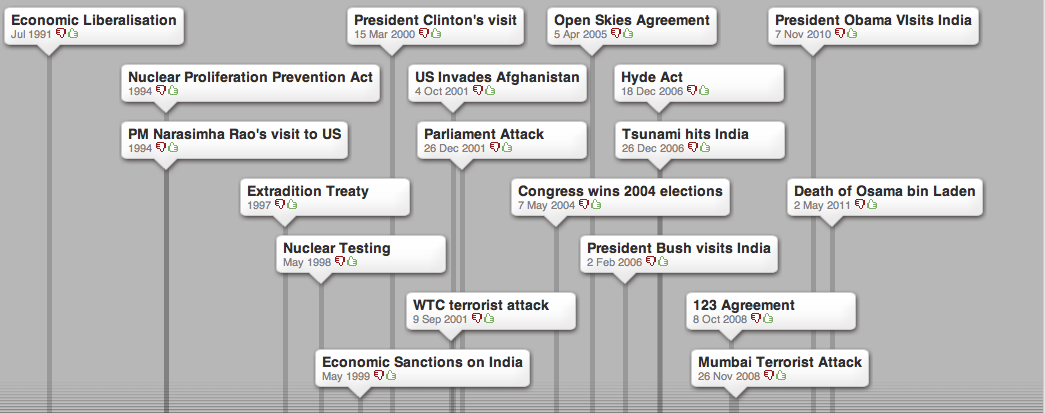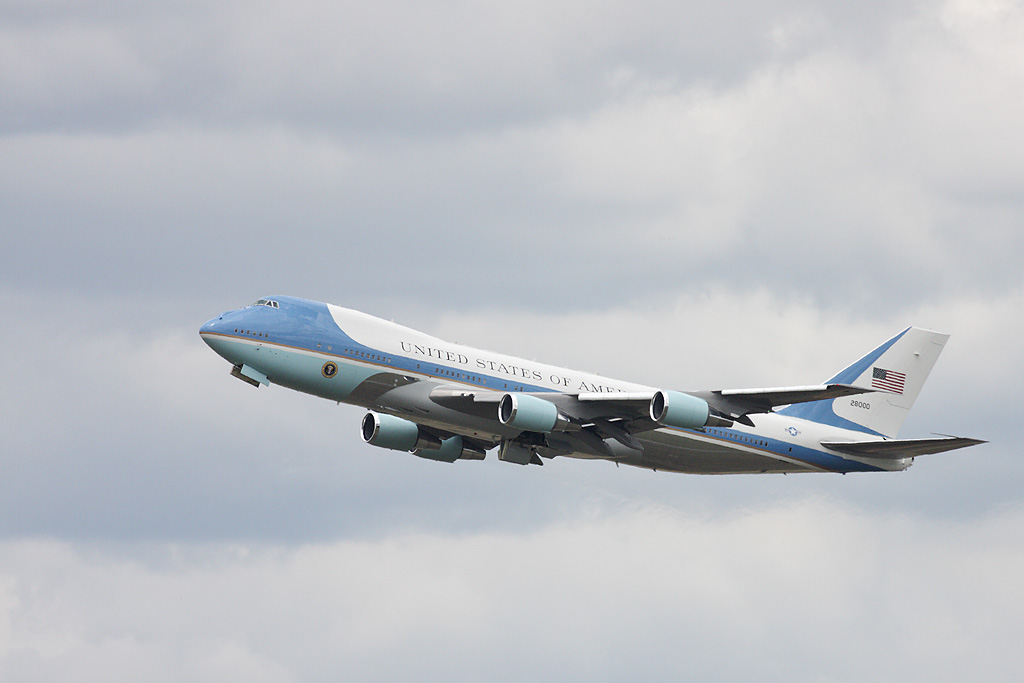It has taken 65 years, 12 US elections and the same number of Indian Prime Ministers to reach the current state of amiable relations between the US and India.
It was the Clinton administration that first identified India as an “emerging economy” in the 1990s.
This new-found friendship that emerged after the break-up of the Soviet Union was short lived, however. The two countries went through a difficult patch in 1998 after India tested nuclear missiles. The US Government imposed economic sanctions as a result.
But President Clinton’s visit to India in 2000 marked a significant breakthrough and shift in relations between the two countries. It was the first visit to the country by an American President in 22 years.
The then Indian Prime Minister, Atal Bihari Vajpayee, described the visit as an “historic transformation.” Indeed the partnership has developed majorly over the past two decades and continues today. Both of Clinton’s successors have visited India.
“They have become natural allies. The relationship is growing because our interests are converging in a multidimensional manner,” says Dr Daljit Singh, a former government adviser at the Indian embassy in Washington D.C.
Many analysts agree that it was under the administration of George W. Bush that Indian-American relations blossomed, particularly over issues like Islamic extremism, energy security and climate change.
Trade between the two countries tripled between 2004 and 2008, and in 2010 President Obama visited India, where he addressed a joint session of the Indian Parliament and backed India’s bid for a permanent seat on the UN Security Council.
It is clear from numerous bilateral treaties and this deepening co-operation that the US sees India as a key partner in the region.
A “strategic partnership”
Hillary Clinton was quizzed about US foreign policy on India as part of her confirmation hearing when she was appointed as US Secretary of State. She described ties between the two nations as a “strategic partnership.”
According to the Indian embassy in Washington D.C, the US is the third largest source of foreign direct investment in India.
But relations extend well beyond trade. Both countries are engaged in major defence projects with military exercises and counter-terrorism operations.
Sticking point?
US policy on Pakistan and Afghanistan has been a contentious issue for India, however. New Delhi has at times been at odds with how Washington perceives India’s relationship with Pakistan.
Dr Singh believes whichever candidate wins the November 6th poll will continue along the same path of engagement and enhanced co-operation with India.
But Dr Soman, a diplomatic historian and author of the book, Through The Looking Glass: Diplomacy, Indian Style says US policy on Afghanistan is more likely to impact on Indian-American relations.
“The current US concern is withdrawing from Afghanistan, whoever wins, that will be the major issue relating to South Asia,” he says.
According to Dr Soman, a US troop withdrawal from Afghanistan is likely to lead to another civil war, which could in turn lead to instability in the whole South Asia region.
Politicians in New Delhi will therefore be keeping a closer eye on what each candidate says about Afghanistan, than anything they may say about India.
Power from Within
US policy on Afghanistan could also be a primary concern for the Indian community living in America. According to the Indian embassy in Washington D.C, Indians now represent the second largest Asian community in the country.
The embassy website says the Indian community “has steadily been increasing its sphere of influence and gaining in political strength,” but there is yet to be any evidence that either US presidential candidate is specifically targeting the Indian community for votes.
The 2012 congressional elections will see six ethnic Indian candidates in the race. Dr. Singh thinks that they will be key players in future US policy on India. “It is a very good development,” he says.
But Dr Singh still feels there is a long way to go: “What matters are policies, not who influences them.” Obama’s tenure has not seen any Indo-Americans in significant advisory positions.”
From Bollywood to Hollywood
There is a seemingly strange fascination with American elections in India. The presidential race is seen through a Hollywood lens and is followed closely by young and old alike.
Some analysts believe that Indian voters follow the US election more closely than those in their own country.
Manu Sharma, editor of India’s Open, explains in his article, Why India longs for an American election: “For youngsters in India American presidential election is somehow war between good and evil. Democrats are good, liberal and very New York and California. Republicans are evil, too Christian and Texas. Scholarly view in New Delhi has long been different. Democrats maybe handsome and clever, but Republican presidents suit India better.”
India-US relations on Dipity.








